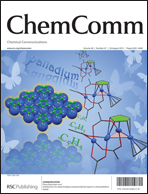The structures of two families of hybrid organic–inorganic polyoxometalates (POMs) functionalized by covalently grafted carboxylate or bisphosphonate ligands are overviewed. The first family concerns the so-called POMOF materials, built from the connection of mixed-valent ε-Keggin type polyoxomolybdates via N-donor or carboxylate organic molecules coordinated to transition metal ions (ZnII, CoII, NiII) grafted at the surface of the POMs. The simulation of the hypothetical zeolitic-like POMOF structures is presented and compared to the experimental ones. The second family gathers the various molecular MoV, MoVI and WVI POMs incorporating directly into their architecture bisphosphonate (BP) ligands. The potentiality of this family of hybrid POMs comes from the organic group grafted on the carbon atom which bears the two phosphonate groups. For both families, besides the structural description, synthetic trends and an overview of their properties are presented. Namely, the electrocatalytic properties (production of H2 and reduction of BrO3−) of the ε-Keggin type polyoxomolybdates are described. The optical and biological activities of the POM–BP compounds as well as their ability to form nanosystems are also reported.

You have access to this article
 Please wait while we load your content...
Something went wrong. Try again?
Please wait while we load your content...
Something went wrong. Try again?


 Please wait while we load your content...
Please wait while we load your content...